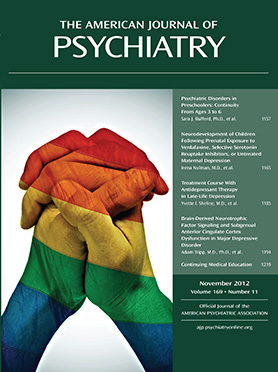Part of a current wave of history, The LGBT Casebook is the first book to bring the unique needs of its eponymous clients front and center. The book begins with an explanation of how modern this history is, with discussion of the use of the colloquial term “coming out.” Many readers of the text will find themselves older than the LGBT (lesbian, gay, bisexual, and transgender)-based use of the term, which dates back to the 1960s. These same readers will remember that homosexuality itself was not fully depathologized until two decades later in 1980, with the publication of DSM-III. With this casebook, psychiatry finally finds itself walking toward—to meet and understand—the LGBT experience. The editors do a wonderful job of covering this rapidly changing cultural topography, ranging from more recent changes, such as the repeal of “don’t ask don’t tell,” to the ongoing national debate concerning marriage equality, with its resulting legal uncertainties. Drs. Levounis, Drescher, and Barber cover the significant ground yet to be gained and address how this affects our clients and their families. As such, this book is a needed addition to help therapists deal with LGBT-related issues.
The LGBT Casebook should be considered a resource for both the more novice clinician, with its definitions and accessible prose touching on the many issues of LGBT life, and the expert reader, with its directed citations. Each chapter concludes with a summary of key points and multiple-choice questions, with answers and explanations available. The book is divided into two sections, with the first including background material. The beginning chapters provide an excellent insider’s view into the LGBT experience. This includes insight into the developmental perspective and the many variants of gender- and sexual-based identity and behavior. The book also provides lengthy examination of the coming out process. Unique to each person and involving both a coming out to one’s self and engagement in congruent behavior, coming out to others can be a difficult, ongoing process. The editors note the special challenges of coming out later in life, as well as coming out as a racial minority. The ramifications of coming out, which can be severe and result in loss of work, family, and community, are discussed in detail. Clinicians are occasionally provided with advice, such as encouragement not to collude with clients’ avoidance and to gently engage around issues of orientation and identity when appropriate.
Nonetheless, some younger LGBT individuals may have a significantly different experience as mores in culture and family progressively shift. The LGBT Casebook provides a balanced account of the stressors that come from both sides of the culture war. For instance, in the chapter on LGBT parenting, Dr. Barber describes the challenging legal battles couples face in states that still have discriminatory laws against, for example, LGBT adoption. On the other hand, couples who have planned every step of a family may face severe disappointment when a planned pregnancy ends in miscarriage. There is also a chapter dedicated to issues of sexuality in the therapeutic relationship, which might be particularly useful for new therapists wondering whether they should come out to their LGBT clients.
The majority of the second section consists of 20 case studies that are dedicated to the intersection of a variety of presenting problems and the LGBT client. These span between the various axis I disorders, touching on substance dependence, anxiety disorders, and psychotic disorders, and axis II borderline personality disorder and V-codes, such as partner relational and acculturation problems. This is perhaps the most compelling part of the book, since the vividly written portraits seem simultaneously real and familiar. Here, we see how the conflicts introduced in the first chapters are actually lived by our clients. The cases are accompanied with DSM-IV diagnostic criteria, as well as recommendations for medication and psychotherapy.
One particularly memorable case patient is “Alexis,” a client who raises gender and sexual orientation issues and is introduced in the chapter on schizophrenia. There is thoughtful discussion on where the distinction between disorder and difference may lie. Today, both schizophrenia patients and the gay and lesbian community may be satisfied with how psychiatry treats them. However, the same may not be said for all transgender individuals, many of whom contest the treatment of gender identity disorder, requisite for sex reassignment therapy, as a mental disorder. It is tempting to draw a parallel between homosexual and transgender individuals vis-à-vis DSM, and perhaps discussion of the issue is worthwhile, at least insofar as to understand what psychiatry can still represent. Debate over the diagnosis is likely to continue following the presumed inclusion of gender identity disorder in DSM-5, set to be released in May 2013.
Indeed, as often is the case, the letter in the acronym LGBT that is most lost is “T,” or the transgender client. While the needs of the transgender individual, and occasionally issues around gender identity itself, do overlap to some degree with the needs of LGB individuals, transgender people have their own distinct set of concerns and often face even more pervasive discrimination. Although these clients are given sufficient attention in the case studies, hard data about the transgender experience are frequently lacking. The LGBT Casebook, if anything, behooves us as a field to do more work to advance our understanding of the needs of our transgender clients.
It is both fortunate and unfortunate that this book may be outdated in the next few years. As state, and perhaps federal, laws shift to protect our LGBT clients, portions of this text may become less relevant to everyday practice. Thus, I am hopeful that the editors keep updating and publishing new editions as history continues to speed forward.

